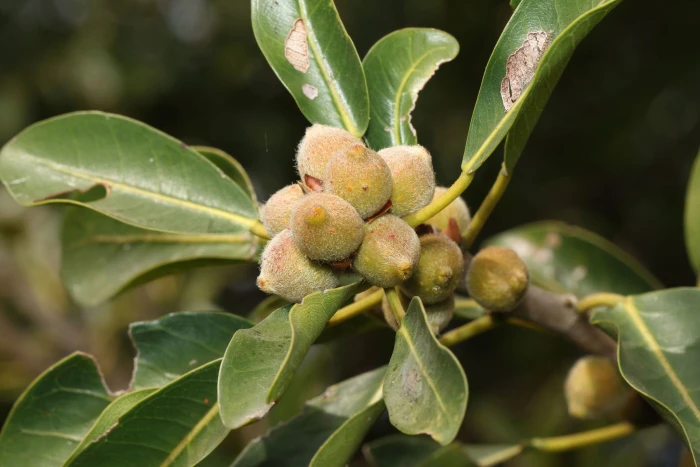African Wild Fig
(Ficus thonningii)
African Wild Fig (Ficus thonningii)
/
/

Alan Manson
CC BY 4.0
Image By:
Alan Manson
Recorded By:
Copyright:
CC BY 4.0
Copyright Notice:
Photo by: Alan Manson | License Type: CC BY 4.0 | License URL: http://creativecommons.org/licenses/by/4.0/ | Rights Holder: Alan Manson | Publisher: iNaturalist | Date Created: 2019-07-07T10:28:51-07:00 |























































Estimated Native Range
Climate Requirements for Granger, Indiana
| This Plant | Your Site | Plant Suitability for Your Location | ||
|---|---|---|---|---|
| • Precipitation | 36" - 44" | 38" | Aquatic | Aquatic |
| • High Temp. | 80°F - 100°F | 84°F | Your summer temperatures are normal for this plant. | Excellent |
| • Low Temp. | 44°F - 73°F | 16°F | Your winter temperatures may be too cold for this plant | Too cold |
This plant should grow very well at your location but requires an aquatic environment.
Summary
Ficus thonningii, commonly known as African Wild Fig, is an evergreen tree that is native to a variety of habitats including forests, woodlands, and savannahs in Africa. It can grow to a height of 45-60 feet (14-18 meters) and a width of 24-36 feet (7-11 meters). This species is characterized by its spreading canopy and buttressed roots, with a bark that is smooth and gray. The leaves are dark green, and the small figs it produces are commonly eaten by birds and wildlife.
The African Wild Fig is valued for its shade and ornamental qualities, making it suitable for large gardens, parks, and as a street tree in tropical and subtropical regions. It is drought-tolerant once established and can adapt to a range of soil types, though it prefers well-drained soils. It requires full sun to light shade. In some regions, Ficus thonningii is used for reforestation projects due to its fast growth and soil stabilization properties. However, it can become invasive outside its native range, and its aggressive root system may damage pavements and buildings.CC BY-SA 4.0
The African Wild Fig is valued for its shade and ornamental qualities, making it suitable for large gardens, parks, and as a street tree in tropical and subtropical regions. It is drought-tolerant once established and can adapt to a range of soil types, though it prefers well-drained soils. It requires full sun to light shade. In some regions, Ficus thonningii is used for reforestation projects due to its fast growth and soil stabilization properties. However, it can become invasive outside its native range, and its aggressive root system may damage pavements and buildings.CC BY-SA 4.0
Plant Description
- Plant Type: Tree
- Height: 45-60 feet
- Width: 24-35 feet
- Growth Rate: Moderate
- Flower Color: N/A
- Flowering Season: Winter, Spring, Summer, Fall
- Leaf Retention: Evergreen
Growth Requirements
- Sun: Full Sun
- Water: Medium
- Drainage: Medium
Common Uses
Bird Garden, Drought Tolerant, Potted Plant, Salt Tolerant
Natural Habitat
Forests, woodlands, and savannahs in Africa
Other Names
Common Names: Strangler Fig, Small Figtree, Figuier À Pagnes
Scientific Names: Ficus neriifolia, Ficus thonningii, Ficus iteophylla, Ficus burkei, Ficus dekdekena, Ficus persicifolia, Ficus hochstetteri, Ficus schimperi, Ficus annobonensis
GBIF Accepted Name: Ficus thonningii Blume